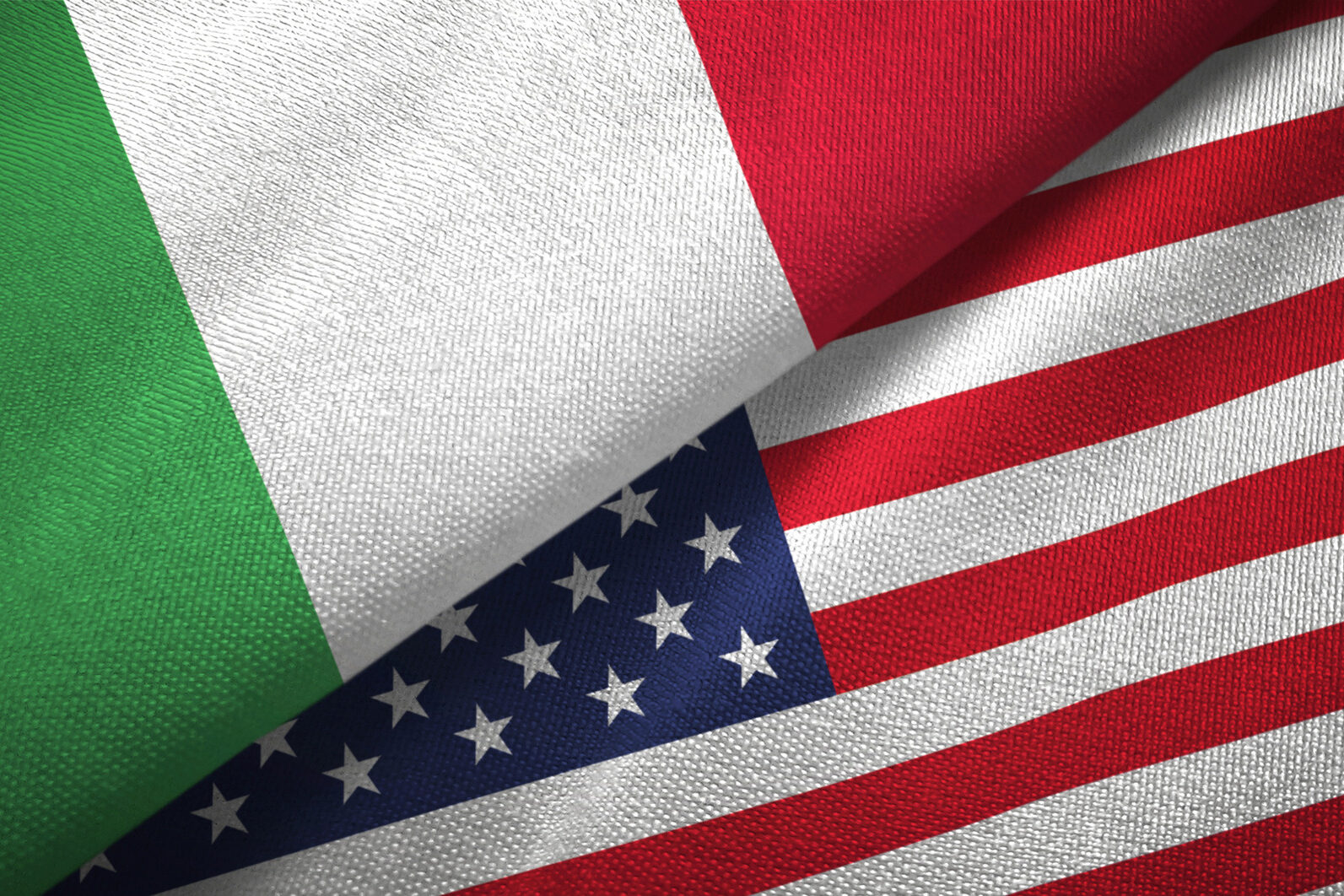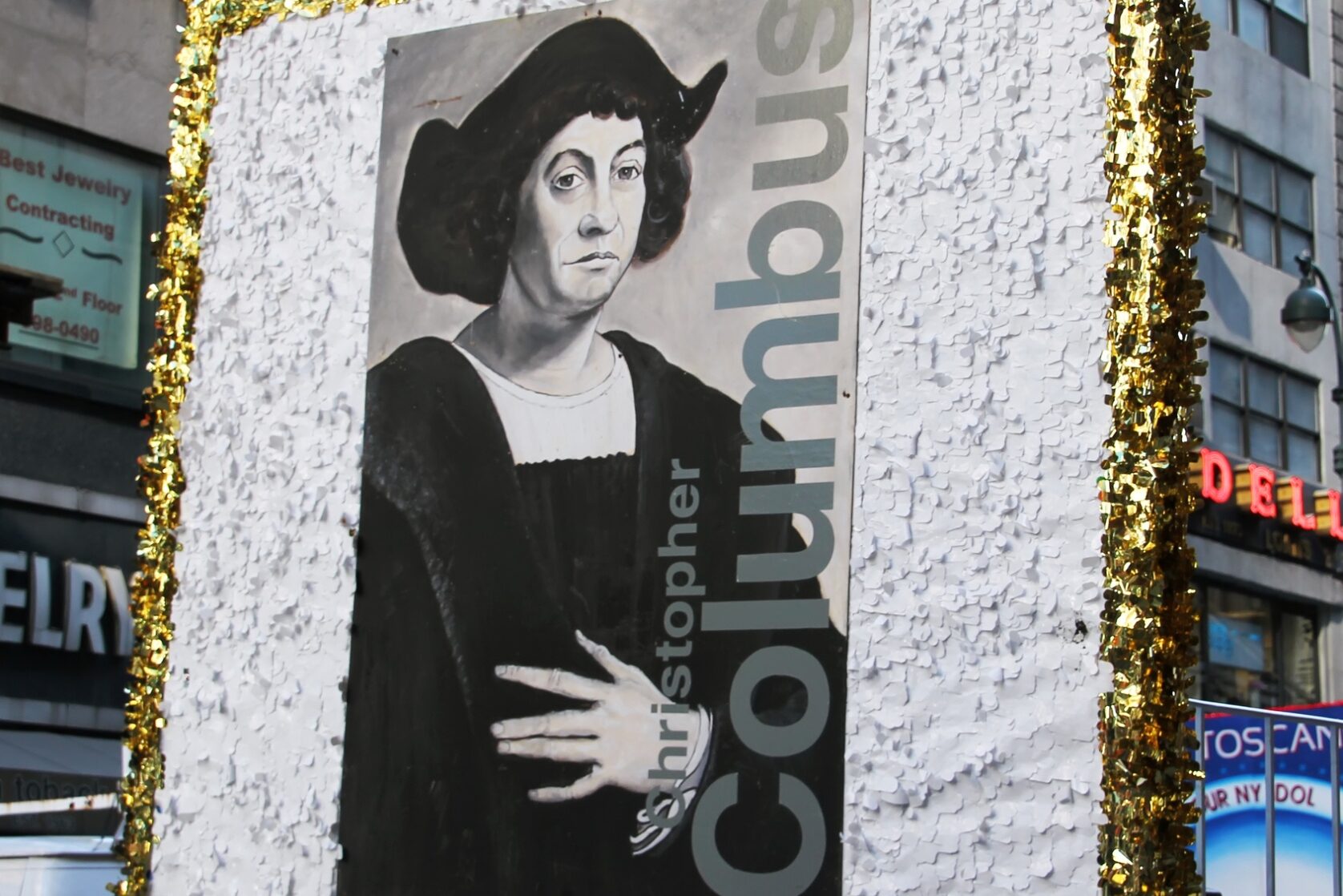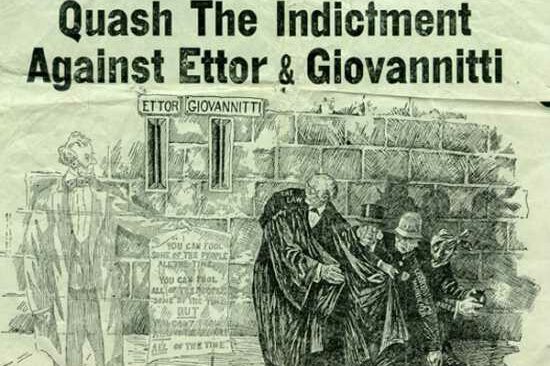Dear readers,
October, official or not, will always be Italian Heritage Month in the hearts of Italian-Americans throughout the United States. Following is an assortment of Italian connections for you.
***
In 2001, among the honored dead at the World Trade Center on 9/11, were 343 firefighters, 23 police, and 37 from the Port Authority of Italian descent.
***
Italians began settling in Colorado in the 1850s, and on April 1st, 1907, Colorado became the first state in the nation to establish Columbus Day as a legal holiday, predating the federal government’s designation by 30 years. 20% of Colorado’s population claimed Italian ancestry by the early 1920s.
***
October 4th is the feast of St. Francis of Assisi. Francis was born in Assisi in 1182 to a prosperous merchant family. He was a lively young man, said to have been carefree and liberal, so much so that his family was happy to see him go soldiering for Assisi. His experience as a soldier, followed by imprisonment and a serious illness, led to his dramatic conversion. He disappointed his parents by utterly rejecting the family business and, in fact,
renouncing all wealth. Francis embraced a life of extreme poverty and encouraged others to join him. He responded to God’s call by founding the Mendicant Order of Friars, now called the Franciscans. He also helped another female convert, Santa Chiara, found the Poor Clares. Francis died at the age of 44 from illness. San Francisco is named in his honor and the
Santa Clara Valley is named for his dear friend and fellow convert, St. Clare.
***
In a desolate valley outside Eureka, Nevada, lies the common grave where five Italian charcoal burners were shot dead in 1879 while striking for better wages on the burgeoning mining frontier. Their names were Giovanni Pedroni, Marcellus Locatelli, Teodoro Zesta, Pompeo Pattini and Antonio Canonica. For over a century, their plight was practically unknown. Silvio Manno rescued them from obscurity with the 2016 publication of his book, Charcoal and Blood: Italian Immigrants in Eureka, Nevada, and the Fish Creek Massacre. The Fish Creek Massacre is considered the first act of violence against Italian immigrants in America.
***
Luciano Pavarotti, tenor, was born in 1935, on October 12th, the day formerly known as Columbus Day throughout the United States. He was born in Modena, Italy, and began his career to critical acclaim as Rodolfo in Puccini’s La Bohème in 1961 in Reggio Emilia.
***
October comes from the Latin word octo, “eight,” because this had been the eighth month of the early Roman calendar.
***
Judge Victor M. Campilongo passed away peacefully on October 1st, 2022, at his home in San Rafael, surrounded by his loving family. He was 94. Born to Biagio (Bill) Campilongo, and Josephine Cellilo Campilongo, and raised in San Francisco, he graduated from Galileo High School in 1945. He then matriculated to the University of San Francisco, and graduated in 1949 with a B.S. in political science. He married his one and only, Lucille Burrafato, in 1950, and the couple had three children. He was commissioned as a second lieutenant in the US Army Reserves in 1949 and was called to active duty during the Korean War in 1951 and 1952, where he served as a heavy gun battery commander. In October of 1952, he returned to active reserve duty and retired honorably in July 1979, after 30 years of service, with the rank of colonel. Victor received a US doctoral degree from San Francisco Law School in 1958, and practiced law in San Francisco until he was appointed to the San Francisco Municipal Court in 1970. In 1972, he was elevated to the San Francisco Superior Court, and by 1989, he had become the presiding judge of the Appellate Division. Victor had was also an officer in the Justinians, the Italian-American Judges’ Order.
***
St. Peter and Paul Church celebrates the 139th year of its existence. In San Francisco, North Beach’s main church opened for business in 1884 and commemorates its birthday in October.
***
The San Francisco, California, earthquake struck shortly after 5 p.m. on October 17, 1989, disrupting a World Series baseball game, which was about to begin, and collapsing a busy freeway and dozens of homes and buildings, including Joe Di Maggio’s home in the marina.
***
Antonio Meucci owned a candle factory on Staten Island, where Garibaldi was once employed. He tinkered with inventions of all kinds and invented an electric apparatus that could transmit the human voice. He could not afford the cost of a patent, and so took out a caveat in 1871, which was renewed in 1872, 1873, and 1874. He presented his detailed papers on his teletrofono to the V.P. of the American District Telegraph Company of New York, who promised to have his telephone tested, but he never did. When Meucci requested the return of his papers, he was informed that they had been lost. Graham Bell obtained his patent in 1876, five years after Meucci’s caveat. Meucci lost his case. The case was appealed, but unfortunately, Meucci died before it came up for hearing in 1891.
Cari lettori,
Ottobre, ufficiale o meno, sarà sempre l’Italian Heritage Month nel cuore degli italoamericani di tutti gli Stati Uniti. Di seguito è riportato un assortimento di collegamenti italiani per voi.
***
Nel 2001, tra le vittime onorate al World Trade Center l’11 settembre, ci furono 343 vigili del fuoco, 23 poliziotti e 37 dell’Autorità Portuale di origine italiana.
***
Gli italiani iniziarono a stabilirsi in Colorado nel 1850 e il 1° aprile 1907 il Colorado divenne il primo Stato della nazione a istituire il Columbus Day come festa legale, anticipando di 30 anni la designazione del governo federale. All’inizio degli anni ’20, il 20% della popolazione del Colorado rivendicava origini italiane.
***
Il 4 ottobre è la festa di San Francesco d’Assisi. Francesco nacque ad Assisi nel 1182 da una prospera famiglia di mercanti. Era un giovane vivace, si diceva fosse spensierato e liberale, tanto che la sua famiglia era felice di vederlo partire da Assisi. La sua esperienza da soldato, seguita dalla prigionia e da una grave malattia, portarono alla sua drammatica conversione. Deluse i suoi genitori rifiutando assolutamente il negozio di famiglia e, poi rinunciando a ogni ricchezza. Francesco abbracciò una vita di estrema povertà e incoraggiò altri a unirsi a lui. Rispose alla chiamata di Dio fondando l’Ordine dei Frati Mendicanti, ora chiamati Francescani. Aiutò anche un’altra convertita, Santa Chiara, a fondare le Clarisse. Francesco morì all’età di 44 anni per malattia. San Francisco onora il suo nome eSanta Clara Valley prende il nome dalla sua cara amica e compagna convertita, Santa Chiara.
***
In una valle desolata fuori Eureka, nel Nevada, si trova la fossa comune dove cinque carbonai italiani furono uccisi nel 1879 mentre scioperavano per ottenere salari migliori dalla fiorente frontiera mineraria. I loro nomi sono Giovanni Pedroni, Marcello Locatelli, Teodoro Zesta, Pompeo Pattini e Antonio Canonica. Per oltre un secolo la loro situazione rimase praticamente sconosciuta. Silvio Manno li ha salvati dall’oscurità con la pubblicazione nel 2016 del suo libro, Charcoal and Blood: Italian Immigrants in Eureka, Nevada, and the Fish Creek Massacre. Il massacro di Fish Creek è considerato il primo atto di violenza contro gli immigrati italiani in America.
***
Luciano Pavarotti, tenore, nacque nel 1935, il 12 ottobre, giorno anticamente conosciuto come Columbus Day in tutti gli Stati Uniti. Nacque a Modena, in Italia, e iniziò la sua carriera con grande successo di critica nel ruolo di Rodolfo ne La Bohème di Puccini nel 1961 a Reggio Emilia.
***
Ottobre deriva dalla parola latina octo, “otto”, perché era l’ottavo mese del calendario romano antico.
***
Il giudice Victor M. Campilongo è morto serenamente il 1° ottobre 2022, nella sua casa di San Rafael, circondato dalla sua amorevole famiglia. Aveva 94 anni. Nato da Biagio (Bill) Campilongo e Josephine Cellilo Campilongo, e cresciuto a San Francisco, si diplomò alla Galileo High School nel 1945. Si iscrisse poi all’Università di San Francisco e si laureò nel 1949 con un B.S. in scienze politiche. Sposò la sua sola e unica, Lucille Burrafato, nel 1950, e la coppia ebbe tre figli. Fu nominato sottotenente nelle riserve dell’esercito americano nel 1949 e fu chiamato in servizio attivo durante la guerra di Corea nel 1951 e 1952, dove prestò servizio come comandante di una batteria di cannoni pesanti. Nell’ottobre del 1952 tornò al servizio di riserva attiva e si ritirò onorevolmente nel luglio 1979, dopo 30 anni di servizio, con il grado di colonnello. Victor conseguì un dottorato negli Stati Uniti presso la San Francisco Law School nel 1958 ed esercitò la professione legale a San Francisco fino a quando venne nominato alla Corte municipale di San Francisco nel 1970. Nel 1972 fu nominato alla Corte Superiore di San Francisco e nel 1989 divenne il giudice presidente della divisione d’appello. Victor fu anche ufficiale del Giustiniano, l’Ordine dei giudici italo-americani.
***
La Chiesa di San Pietro e Paolo festeggia il 139° anno della sua esistenza. A San Francisco, la chiesa principale di North Beach aprì i battenti nel 1884 e celebra il suo compleanno in ottobre.
***
Il terremoto di San Francisco, in California, ha colpito poco dopo le 17:00 il 17 ottobre 1989, interrompendo una partita di baseball delle World Series, che stava per iniziare, e facendo crollare un’autostrada trafficata e dozzine di case ed edifici, inclusa la casa di Joe Di Maggio nel porto turistico.
***
Antonio Meucci possedeva una fabbrica di candele a Staten Island, dove un tempo lavorava Garibaldi. Armeggiò con invenzioni di ogni genere e inventò un apparecchio elettrico in grado di trasmettere la voce umana. Non poteva permettersi il costo di un brevetto, quindi nel 1871 fece un caveat, che fu rinnovato nel 1872, 1873 e 1874. Presentò i suoi documenti dettagliati sul suo teletrofono al V.P. dell’American District Telegraph Company di New York, che promise di far testare il suo telefono, ma non lo fece mai. Quando Meucci chiese la restituzione delle sue carte, venne informato che erano andate perdute. Graham Bell ottenne il brevetto nel 1876, cinque anni dopo il caveat di Meucci. Meucci perse la causa. Il caso venne impugnato ma sfortunatamente Meucci morì prima che arrivasse in udienza nel 1891.































